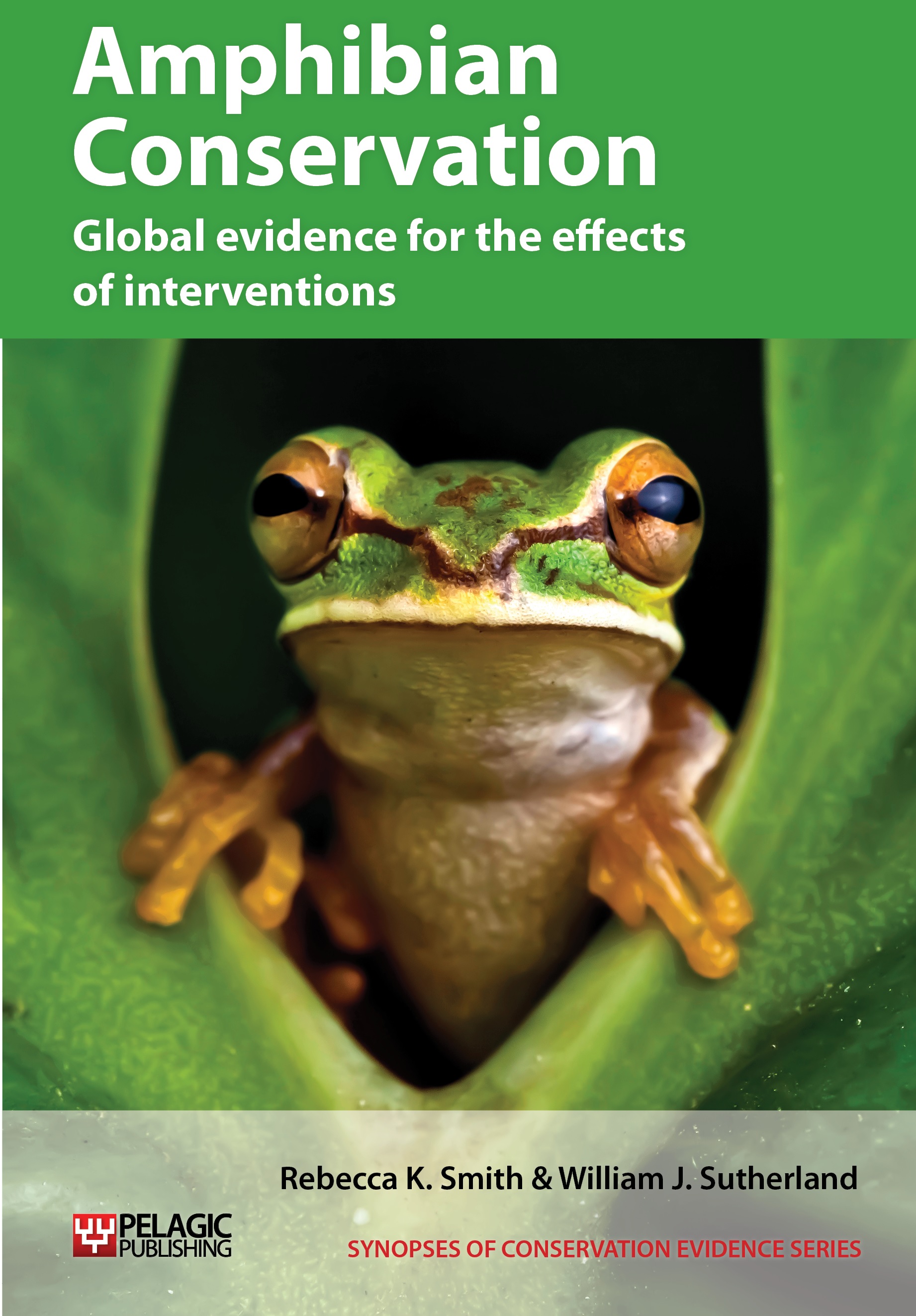Release captive-bred green and golden bell frogs
-
Overall effectiveness category Likely to be ineffective or harmful
-
Number of studies: 4
View assessment score
Hide assessment score
How is the evidence assessed?
-
Effectiveness
20% -
Certainty
50% -
Harms
20%
Study locations
Supporting evidence from individual studies
A study in 2000–2007 in New South Wales, Australia (Daly et al. 2008) found that two captive-bred green and golden bell frogs Litoria aurea released as tadpoles survived at least 13 months after release. Twelve tadpoles were recorded soon after release, followed by two metamorphs. The area was in drought following release. The release site was a pond within a wetland system. Potential predators were removed from the site (eels: 50 kg; red foxes: 17 removed). Approximately 3,500 tadpoles were released in December 2005, 1,500 in February 2006 and 1,000 in April 2007. Nocturnal visual count surveys were undertaken five times in the first two weeks, 12 times within the first two months and then monthly August–May (32 visits). Monitoring was to continue in 2008–2012.
Study and other actions testedA before-and-after study in 1998–2004 at a created wetland on a golf course in Long Reef, Sydney, Australia (Pyke et al. 2008) found that captive-bred green and golden bell frogs Litoria aurea released as tadpoles did not establish a self-sustaining population. Once tadpole releases had stopped the number of frogs declined to zero. Only 45 adult frogs were recorded. A few males were heard calling, but breeding was not recorded. Releases did not result in any metamorph or immature frogs if they occurred during autumn, involved low numbers of tadpoles, if ponds dried out soon after release or if fish were present. Successive releases into fish-free ponds were decreasingly successful in terms of numbers of metamorphs and immatures. Sixteen ponds, 12 interconnected (20–200 cm), were created in 1996–1997 with planting of aquatic emergent vegetation and shrubs. A total of 9,000 captive-bred 3–4-week-old tadpoles were released into the ponds over 11 occasions in 1998–2003. Amphibian monitoring was undertaken at 1–4 week intervals using artificial shelters around ponds, dip-netting and visual count surveys.
Study and other actions testedA before-and-after study in 2004–2006 of three created ponds in a restored wetland in New South Wales, Australia (Stockwell et al. 2008) found that captive-bred green and golden bell frogs Litoria aurea released as tadpoles did not result in the establishment of a stable population due to deaths from chytridiomycosis. Tadpole survival was high following release and some metamorphs survived for up to a year. However, numbers declined over the first 13 months and no frogs were recorded from March 2006. Four of six dead frogs found in 2005 and 53% of a sample of 60 juveniles captured tested positive for chytridiomycosis. In summer 2005, 850 tadpoles were released into three ponds created in 2002. A fence was installed surrounding the ponds and adjacent grassland (2,700 m2) to contain the frogs and in an attempt to exclude competing species, predators and the chytrid fungus. Visual encounter surveys were carried out 2–4 times each month. A sample of frogs were captured and tested for chytrid.
Study and other actions testedA review of four release programmes near Sydney, Australia (White & Pyke 2008) found that only one resulted in the establishment of a stable population of captive-bred green and golden bell frogs Litoria aurea. That population, which had been supplemented with three translocated and at least five colonizing adults was estimated at over 50 adults within four years. At Botany, frogs were detected the following spring, but none survived the summer. Non-native fish killed all individuals from the second release (fish were then eradicated). At Long Reef, 45 adults were recorded, but without continued releases the population declined to zero (for more details see (Pyke, Rowley, Shoulder & White 2008). At Marrickville, breeding took place after the second release, but only two survived to adults and the population became infected with chytridiomicosis. All individuals were predated after the third release. At Arncliffe, 200 captive-bred tadpoles were released in two created ponds in 2000–2001. At Botany, there were four releases each of 500–1,500 tadpoles and 0–50 juveniles into two ponds in 1996–2000. At Long Reef Golf Course, 9,300 tadpoles, 70 juveniles and five adults were released into 16 ponds over 11 occasions in 1998–2004. At Marrickville, a total of 162 tadpoles were released into a created pond over three occasions in 1998–2000.
Study and other actions tested
Where has this evidence come from?
List of journals searched by synopsis
All the journals searched for all synopses
This Action forms part of the Action Synopsis:
Amphibian Conservation
Amphibian Conservation - Published 2014
Amphibian Synopsis





)_2023.JPG)














